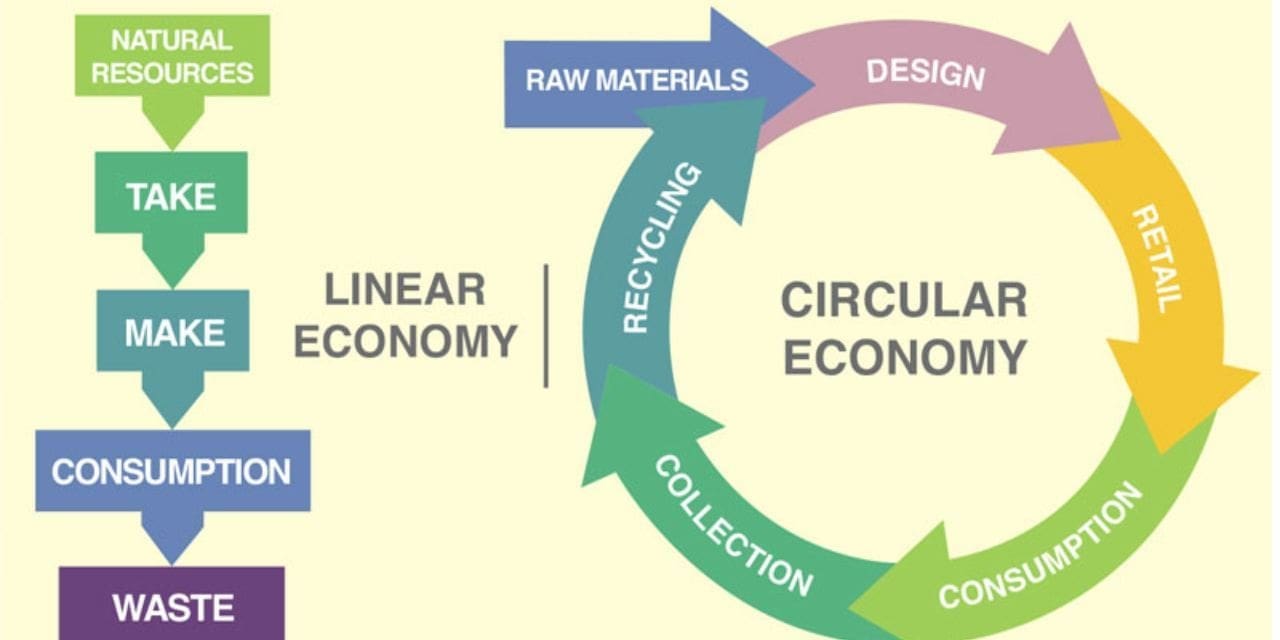Introduction
Textile industry has 2 largest sectors in economic growth all over the world. Textile industry secrete very harmful and hazardous material from wet processing, dyeing printing and other waste material from garment production industry because of this, it is very harmful for human being and environment also.

What is sustainability?
Sustainably comprises of fulfilling need of the today’s generation without compromising need of future generation while making balance between economic growth, environmental care and social well-being which are the 3 pillars of sustainability.
Sustainable practices in textile industry
Sustainable textile means production of textile materials with ecofriendly material and process, which will be healthy and safe for human beings and also for the environment. Production and processing of textiles should be renewable and recycled resources.
Need of the sustainability in textile industry
● Use of natural resources increased in today’s world.
● Textile waste like chemicals and other material is cause for increasing in pollution.
● Textile industry consume large amount of fossil and fuel in the process of wet treatment which contain carbon in huge amount and it reacts with oxygen to form carbon dioxide which causes global warming.
● Apparel industry also need to eject the environmental hazard and also need to improve process efficiency.
How sustainability can be achieved in textile industry
- Material selection
for achieving sustainability in textile industry, we should select the raw material and resources which will be reducible, reusable and recyclable. For example, cotton, hemp, bamboo, wool, linen etc. which are recyclable and biodegradable - Eco Design
Eco design refers to the design of products with less environmental damage and also enhances the aesthetic and functional properties of the product. - Eco-friendly alternatives to traditional production
Some textile companies using ecofriendly alternatives for textile processing which are whitening, printing, waste free apparel production etc.
Alternate wet process methods (chlorine-free bleaching, cold or low temperature dye processes, dye bath reuse, eco bleach, Ink-jet printing, vegetable tanning, waste water recycling) - Packaging
Sustainable packaging means use packaging material with 3 principle which are reduce-reuse-recycle. It should be less hazardous for environment. - Supply chain
Supply chain management is the integral part of any company. It is required for growth
and success of the company and also for consumer satisfaction. - Transportation
Transportation takes place in textile industry through air, road or water resources. It consumes lots of energy which reduce natural resources and emit carbon dioxide which is lead to global warming.
Sustainability standards in textile industry
The two primary sustainability standards in use for organic textiles are the Organic Content Standard (OCS) and the Global Organic Textile Standard (GOTS). 5 Solution: Circular Economy
A circular economy or circularity is a production and consumption model. This includes sharing, renting, reusing, repairing, refurbishing and recycling existing materials and products for as long as possible. It aims to address global challenges such as climate change, biodiversity loss and waste generation. A circular economy differs from a linear economy in that there is no reuse or recycling. Textile brands and manufacturers are taking initiatives towards sustainability. Some recent efforts include:
● H&M — created transparency rules for suppliers and provided details of its sustainability strategy in its annual sustainability report.
● Nike — set sustainability targets that include minimizing its environmental footprint through analyzing the supply chain to “use less, use better and use again.”
● ASOS — initiated a “Green Room” on its website that displays only ethically conscious brands that fit within its “sustainability criteria.”
● Fat Face — developed a company-wide code of conduct for its factories and a responsible sourcing commitment.
● Patagonia — A market leader in responsible fashion, the company has launched an innovative clothing reuse and recycle program.
Conclusion
To sustain textile industry for future, we should have to focus on sustainability in textile industry by civilizing resource productivity, co-efficiency, cost efficiency, customer satisfaction, brand reputation, environmental conditions etc. and undertaking better health conditions of the wearers and the workers. 1
References
● “The Sustainability in Textile Industry.” 20 Dec. 2021, https://textilefocus.com/sustainability-textile-industry/. Retrieved on February 11, 2023.
● “Significance Of Sustainability In Textiles | Textile World.” 17 Feb. 2022, https://www.textileworld.com/textile-world/features/2022/02/significance-of-sustainability-in-textiles/. Retrieved on February 11, 2023.
● “What is Sustainability? How Sustain abilities Work … – Investopedia.” 23 Jun. 2022, https://www.textilesphere.com/2020/01/sustainability-in-textile-industry.html, retrieved on feb21, 2023
● https://www.investopedia.com/terms/s/sustainability.asp. Retrieved on February 12, 2023.
● “Sustainability Standards in the Textile Industry.” https://sustainfashion.info/sustainability-standards-in-the-textile-industry/. Retrieved on February 12, 2023.

